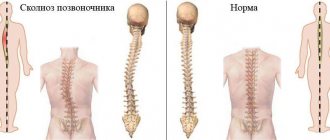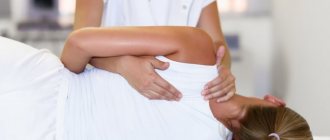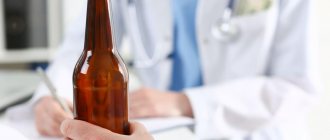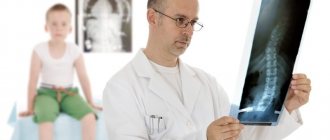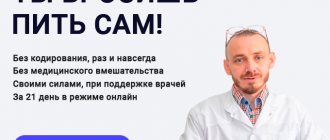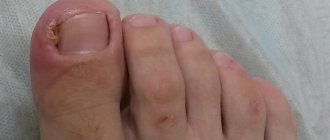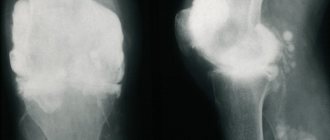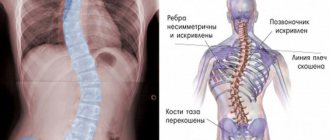A dangerous disease that leads to disability is called scoliosis of the thoracic spine (TSS). Pathology can be determined at different times and stages, thanks to modern diagnostic methods. Pathology occurs at different ages, maybe from birth. In order not to become disabled, it is necessary to undergo treatment in a timely manner and follow all the doctor’s instructions.
What it is?
The human spinal column has a pair of convexities forward and backward. Thoracic scoliosis is a deformity when the spine changes its angle in any direction. Most often, the chest is deformed to the sides. In other words, a deviation with an axis shift to the left or right. Much less often, two axis bends appear at once, different in direction.
Scoliosis is included in the International Classification of Diseases (ICD) and has a medical code of M41. The disease can be diagnosed from the age of 6 years. According to statistics, the pathology manifests itself in 12% of adolescents, and 15% of patients have severe thoracic scoliosis. It is a mistake to believe that for this pathology (scoliosis of the hip joint), there is no need for treatment. Many patients do not take the problem seriously and think that it is only a visual defect.
With the development of thoracic scoliosis, internal organs are affected:
- Lungs.
- The cardiovascular system.
- Gastrointestinal organs.
- Kidneys.
In patients with scoliosis, the functioning of one lung is initially impaired, and the second has to work at an increased pace. This displacement provokes asthma, bronchitis and pulmonary edema.
Adult scoliosis is often accompanied by:
- Hypertension.
- Burning of the esophagus.
- Ulcer.
- Metabolic disorders.
If the causes and symptoms are not treated, the pathology develops rapidly. In advanced forms, patients are unable to independently engage in everyday activities. They constantly lie down and cannot get up.
Treatment of S-shaped scoliosis
The nature of what treatment will be prescribed to the patient directly depends on the degree of S-shaped scoliosis that was detected. Conservative methods, including drug therapy, physiotherapy, exercise therapy, manual therapy and lifestyle changes, are effective only in the initial stages of scoliosis development. In case of 3rd or 4th degree, the only way out of the situation is to perform an operation.
But in some cases, surgical intervention is also prescribed for stage 2 S-shaped scoliosis. Most often in such situations it is required for children who have a tendency to rapidly progress the disease and have additional hemivertebrae or fusion of ribs. Surgery may also be prescribed in the early stages of S-shaped scoliosis if it:
- caused the development of cardiac or respiratory failure;
- causes severe compression of blood vessels or spinal roots;
- carries a high risk of spinal cord injury.
Thus, for each patient, treatment is developed strictly on an individual basis, taking into account not only his age, but also the presence of concomitant diseases, the risk of developing complications of S-shaped scoliosis and other factors.
Drug therapy
Drug therapy is far from the main method of treating S-shaped scoliosis. It can only temporarily improve the patient’s condition, as well as increase the effectiveness of other measures taken, but in no way affects the nature of the disease and is not able to restore the normal anatomy of the spine.
Therefore, as part of drug treatment, patients are mainly prescribed only muscle relaxants and anti-inflammatory drugs. The first ones are designed to reduce the tone of overly tense muscles, i.e., relieve spasm. This will reduce the severity of pain and reduce the risk of injury.
Anti-inflammatory drugs are indicated for faster resolution of the inflammatory process, which invariably occurs with spinal deformity. This also helps to reduce pain, both due to the mild analgesic effect of the most drugs in this group, and due to the reduction in the intensity of inflammation. While taking anti-inflammatory drugs, there is an additional decrease in soft tissue swelling.
Sometimes patients are additionally prescribed thyroid hormones. This is only possible with a comprehensive examination and the absence of concomitant diseases, metabolic disorders and other changes in which hormonal therapy can cause more harm than good. In S-shaped scoliosis, thyroid hormones are prescribed to increase bone plasticity, which will allow the normal position of the spine to be restored more quickly and effectively through other components of conservative therapy.
Physiotherapy
Physiotherapeutic procedures are designed to increase the effectiveness of other therapeutic interventions. As a rule, when treating S-shaped scoliosis, the following are prescribed:
- electrophoresis;
- magnetic therapy;
- ultrasound therapy.
Thanks to gentle physical effects, it is possible to increase blood circulation, increase metabolic rate, normalize muscle tone and have a general strengthening effect on the body. In most cases, for S-shaped scoliosis, courses of procedures of 8-15 sessions are prescribed, performed at a certain interval.
Sometimes patients may be offered traction therapy, i.e., spinal traction. The procedure is carried out using a special apparatus and involves carefully stretching the body in opposite directions along the central axis, which helps to normalize the position of the vertebrae and eliminate pathological bends of the ridge.
Exercise therapy
Physical therapy is one of the main methods of conservative treatment of S-shaped scoliosis. It involves daily performance of a special set of exercises, which is developed for each patient individually in accordance with the severity of his disease, level of physical fitness and age. The shape of the S-shaped scoliosis is also taken into account, or more precisely, in which direction the main arch is formed. It is recommended to conduct the first classes under the guidance of a specialist, and only after you have fully mastered the program and methods of performing each exercise, you can start practicing at home on your own.
The goals of exercise therapy are:
- strengthening the muscle corset, which can create adequate support for the spine;
- improved posture;
- activation of blood circulation and metabolic processes;
- correction of spinal deformity.
In addition to daily exercise therapy, patients are recommended to take up swimming, certain types of dancing, or some other sports disciplines that help strengthen all muscle groups of the upper half of the body.
Classes begin with light loads and a small number of repetitions. As the muscles strengthen, the load is increased, reaching the optimal level. Exercises on the Swedish wall have a good effect on the condition of the spine: hanging, pull-ups, etc.
Manual therapy
With S-shaped scoliosis, all patients, provided there are no contraindications, are prescribed manual therapy. It involves a deep massage, which not only works the back muscles, but also has a positive effect on the spine and restores the correct position of the vertebrae. A chiropractor can tone overly relaxed muscles and at the same time eliminate muscle spasms on the opposite side, which very often accompanies S-shaped scoliosis. Thanks to manual therapy sessions, it is often possible to release pinched nerve roots and blood vessels, which has a beneficial effect on a person’s well-being.
But the method cannot be used when:
- acute infectious diseases;
- skin rashes in the affected area;
- severe pathologies of the cardiovascular system, etc.
Lifestyle correction
When diagnosing S-shaped scoliosis, it is very important to create conditions so that the pathology does not worsen. Therefore, patients are recommended:
- provide a balanced diet;
- devote sufficient time to rational physical activity;
- watch your posture;
- avoid maintaining a static body position for a long time (when performing sedentary work, you must take regular breaks, get up and move, not forgetting about your posture);
- do not lift heavy objects;
- change the mattress to an orthopedic one;
- Avoid making sharp body turns.
Patients are often prescribed to wear orthopedic bandages or corsets. For mild forms of S-shaped scoliosis, soft bandages are sufficient, but for curvature of 3, not to mention 4 degrees, you will need to individually make and constantly wear a hard corset. Such designs are designed to reduce the load on the spine and minimize the risk of further curvature.
Surgery for S-shaped scoliosis
If the attending physician understands that the disease continues to progress despite all the measures taken, or complications of scoliosis are already present, he refers the patient to a spinal surgeon, i.e., recommends surgical correction of the curvature of the spinal column. Today, there are many methods of surgical treatment of S-shaped scoliosis, each of which not only has its own advantages and disadvantages, but also indications for its implementation. Therefore, in each case, the spinal surgeon will individually choose the tactics of surgical intervention.
All modern operations to eliminate curvature of the spine involve the installation of special fixing structures of various types and are carried out under general anesthesia. When treating children under 10 years of age, movable clamps are used, which allow the spine to continue to grow and form correctly. Adult patients usually receive rigid fixation structures that remain in the body for life.
The average duration of surgery is 3-4 hours, after which an early rehabilitation period begins. Once the surgeon is satisfied that the patient's condition is stable and progressively improving, he will be discharged home to continue rehabilitation.
There are 3 main methods of performing surgery to eliminate severe S-shaped scoliosis:
- The Harrington method involves the installation and assembly of special structures that consist of rods and hooks. One rod is mounted along the concave part of the spine, and the second - on the convex part. After aligning the spine, they are connected with hooks, which ensures the proper level of fixation. Next, spinal fusion is performed, i.e., conditions are provided for the fusion of the vertebrae with each other. The method makes it possible to reduce the angle of curvature of the spine to 60% of the initial values, but since it involves eliminating the mobility of certain spinal motion segments, it is used quite rarely today.
- The Cotrel-Dubousset method consists of using a system of rods, hooks and screws similar to transpedicular fixation of the vertebrae. It provides a more pronounced effect than the previous method and allows you to achieve a reduction in curvature by 50-90% of the original values. At the same time, the use of the Cotrel-Dubousset technique facilitates the rehabilitation period and eliminates the need to wear a corset.
- The Luke method involves the installation of two rods, which are also attached to the concave and convex parts of the arches. But fixing them in the desired position involves applying special wire sutures. This, in turn, is associated with a risk of damage to the spinal cord and its roots, so the method is practically not used today.
Similar methods for correcting S-shaped scoliosis are mainly used to treat adult patients. If it is necessary to eliminate spinal curvature in children, preference is always given to minimally invasive techniques, although they can also be used to treat the disease in adults. Their essence is to make small incisions in the skin and carefully move apart the muscles, without causing injury to them. In the future, special fixing structures are also installed, which are tiny mechanisms made of heavy-duty alloys. Each of them is mounted with only 2 screws and has a system for adjusting the intensity of pressure, which allows you to smoothly correct the position of the vertebrae and not immediately, but to achieve their alignment in an even straight line. The correction is carried out at certain time intervals on an outpatient basis using a special needle. Moreover, such operations are associated with a minimal risk of damage to nerve structures, have a short rehabilitation period and do not cause severe pain in the early postoperative period.
Thus, S-shaped scoliosis is a fairly common phenomenon, but it definitely requires the earliest possible start of treatment. The severity of the disease is determined by the degree of curvature of the spine. In this case, non-intervention will lead to progression of the deformity and can cause the development of severe complications, including disruption of the heart, lungs or spinal stenosis, which can lead to disability. Therefore, no matter what age S-shaped scoliosis is discovered, treatment should begin immediately. If conservative therapy does not help and the curvature of the spinal column reaches 3 or even 4 degrees, surgery is necessary. At the same time, the risks associated with it are much less than the likelihood of developing and the danger of complications of scoliosis with non-intervention.
Causes
Previously, medicine did not have enough tools and knowledge to accurately diagnose the causes. It was believed that thoracic scoliosis occurs due to muscle weakness. In modern practice, experts identify many more provoking factors. Despite this, 80% of the causes of thoracic scoliosis cannot be determined.
The development of the disease often occurs when sitting incorrectly, incorrect posture, when there is a load on the shoulders, at different levels, on the back. The problem is typical for patients with sedentary work. People at risk include people with the following problems:
- Congenital pathologies and anomalies in muscles and ligaments.
- Leg injuries in which one becomes shorter.
- Rickets.
- Congenital muscle atrophy.
- Tumors.
- Cerebral palsy.
With kyphoscoliotic deformity of the thoracic spine, osteochondrosis and inflammation of the muscle tissue of the back are added to the described causes.
The baby may have a slight curvature, but most often it is insignificant. The development of a strong angle of curvature is possible as a result of loads:
- While holding the head, cervical lordosis appears.
- When trying to sit down, kyphosis of the thoracic region begins.
- During the first steps and standing on your feet, lumbar lordosis appears.
The complete formation of the spine in a person occurs by the age of 17, but changes can be seen much earlier. With constant stress, scoliosis begins to develop, especially on one side.
In an adult, pathology occurs as compensation so that the body can maintain balance. Main reasons:
- Defeat, back injury, spinal hernia.
- Injury to the chest muscles.
- Leg fractures, malunion.
- Osteoporosis.
- Osteochondrosis.
- Carrying a weight on one side of the body, for example, a school backpack on the left or right shoulder.
- Inflammatory processes in the spine.
If pain appears in an adult or child, you should immediately consult a doctor, undergo an examination and, if scoliosis is detected, begin urgent treatment.
The most important
As you can see, scoliosis of the thoracic spine is a serious and dangerous pathology. Its danger is that in the first two stages it is not always possible to notice the deformation. Although with grade 2 scoliosis there is a greater chance of noticing characteristic symptoms. The disease should not be ignored, as it can progress quickly, causing dangerous complications. Thoracic scoliosis can not only worsen the appearance, but also compress important internal organs (lungs, heart, etc.) and disrupt their functioning. In the worst cases, the disease can lead to disability and even death. Timely and competent comprehensive treatment will help correct minor curvature of the spine, as well as avoid complications. For this purpose, exercise therapy, massage, manual manipulation, and physiotherapy are used. In advanced cases, surgery is necessary. It is necessary to begin the prevention of thoracic scoliosis, starting from the period of intrauterine development and throughout life.
Types of violations
Based on the causes of curvature of the thoracic spine, there are several types of scoliosis:
- Congenital . Pathology appears due to fusion or incomplete formation of the vertebrae. In such children, the curvature is noticeable from 1 year.
- Dysplastic . This type is congenital and appears with incomplete development of the vertebrae. This form is the most severe; signs of scoliosis can only be determined by the age of 8, if x-rays have not been taken before. The disease develops quickly and becomes severe.
There are other species that develop a deformed back. They arise not from birth, but over the years, possible types of scoliosis are:
- Neurogenic . Develops in people with cerebral palsy and polio. In childhood, manifestations can be determined by paralysis.
- Rachitic.
- Static.
- Ray.
There are other types:
- In the direction of the bend, if there is one. For example, tilted to the left or right, left-sided scoliosis of the thoracic spine or right-sided.
- According to the form.
- On the corner.
Scoliosis is most often diagnosed by direction. With right-sided, the spine is directed to the right. The disease goes away better and more mildly than left-sided scoliosis. Treatment methods and prevention of the disease are the same.
Without treatment, the symptoms become similar to diseases of the lungs, pleura and other internal organs. It is impossible to determine the disease yourself by unpleasant sensations in the chest. S-shaped scoliosis is also possible, when the back is curved in both directions at different levels in height, and C-shaped scoliosis is simple scoliosis. With the latter there is only one arc.
The main symptom of scoliosis of the thoracic spine is difficult to recognize on your own, since the symptoms resemble diseases of other internal organs. Most often, thoracic scoliosis is characterized by:
- Pain in the back and chest.
- Slouching.
- Different shoulder heights.
- Crooked neck.
- Neuralgia.
- Difficult breathing.
- Rapid fatigue.
- Tingling in my hand.
Knowing the main symptoms, you can identify failures in a timely manner and contact a specialist. To carry out treatment and determine a treatment regimen, the doctor needs to know the degree of scoliosis.
Diagnosis of thoracic scoliosis
The difference between Eastern diagnostic methods is in relation to the human body. If Western medicine strives to identify a disease, our specialists try to determine its cause and interaction with the body. Therefore, at the first stage of diagnosis you will be asked to:
- describe in as much detail as possible the history of the appearance of the first signs of the disease;
- undergo pulse diagnostics (determining the state of the body);
- tilt the body forward with your arms down - to determine the severity of the disease;
- undergo neurological tests.
In the future, to clarify the details and characteristics of the disease, its effect on the body, research is carried out using Western methods:
- Magnetic resonance imaging (MRI), which allows you to literally illuminate the human body and determine the condition of the skeleton and internal organs;
- An electrocardiogram (ECG) to assess the condition of the heart muscle is required in the third stage of breast scoliosis;
- Ultrasound examination (ultrasound) is a procedure that does not require lengthy preparation and reveals characteristic signs of spinal curvature (arch);
- Lab tests.
Treatment can only be prescribed when the doctor makes a specific diagnosis. Timely contact with a specialist will relieve the disease before health problems arise.
Degrees of the disease
The symptoms of thoracic scoliosis are closely related to the degree of pathology. It depends on the curvature, the angle of deviation of the axis. In medicine, there are 4 main degrees of damage:
- 1st degree. With thoracic scoliosis of the 1st degree, the angle of displacement is small, about 5 degrees. It is impossible to detect the disease without the use of radiography. Visually, one shoulder blade may be slightly higher than the second, and the spine is slightly shifted to the side. Pain or other types of discomfort do not appear. Patients get tired quickly after sitting or standing for a long time.
- 2nd degree. With thoracolumbar scoliosis of the 2nd degree, the angle of displacement is 25 degrees. Visually, the disease is easily determined, the person’s posture changes, the ribs and shoulder blades are located at different levels, there may be a small growth on the back. Patients feel rapid fatigue and temporary chest pain that appears after exercise and after being in one position for a long time.
- 3rd degree. The axis shifts up to 50 degrees. The disease is severe, even an inexperienced person can notice changes. In part of the thoracic or pelvic region there is a strong distortion, the ribs protrude on one side and sink on the other. The patient experiences chest pain, shortness of breath, and disruption of the heart and blood vessels. The immune system deteriorates, causing the person to get sick often.
- 4th degree. The most terrible stage of thoracic scoliosis, the axis shifts by more than 50 degrees, the disease manifests itself with constant pain, under any load. The patient must constantly bend his body. Often patients become disabled and cannot get out of bed.
Treatment methods are selected individually by the doctor, it all depends on the specific case.
You can read more about each degree of scoliosis by following the links: first, second, third and fourth.
Symptoms and signs
What spinal scoliosis is has already been clarified, but what signs and symptoms may indicate the presence of pathology? In the initial stages, this insidious disease does not manifest itself in any way, but over time, a feeling of muscle stiffness appears, fatigue increases, general condition worsens, and the most ordinary movements require great effort. Scoliosis has a whole range of symptoms. Visually, the disease can be determined by the lateral deviation of the spine, changes in the position of the torso in different positions, as well as the shape of the chest and pelvis. Depending on the degree of deformation, the manifestations of pathology may be less or more pronounced.
Symptoms of progressive scoliosis:
- deformation of the spinal segments is clearly visible even to the naked eye;
- the configuration of the chest changes, and the intercostal spaces on the convex side of the defect protrude, and on the inner side they sink;
- the vertebrae are displaced around the vertical axis;
- the muscles in the lumbar region are in constant tone;
- with advanced scoliosis, a person feels discomfort in all internal organs, as the volume of the abdominal cavity changes;
- due to constricted neck vessels, there is impaired blood supply to the brain, and headaches often occur;
- gait changes, clubfoot and flat feet progress;
- a person almost constantly feels pain between the shoulder blades, in the lower back and in other quadrants of the spine.
Therapy methods
To treat thoracic childhood scoliosis, parents should consult an orthopedist, and a traumatologist or neurologist will help adults.
Initially, a visual examination is carried out, the doctor conducts a survey, and collects the patient’s complaints. When treating late stages of scoliosis, the doctor uses simple diagnostic methods:
- The patient takes off his outer clothing and turns his back to the doctor.
- The doctor conducts an assessment and determines the degree of curvature in the plane.
- The patient needs to bend over and stretch his fingers towards the floor. The method makes it possible to see all the deformations of the back.
- Reflexes and muscle strength are tested.
- Additionally, a scoliometer can be used to indicate the degree of disease and the angle of axis displacement. An accurate diagnosis can be made using x-rays.
Thoracic scoliosis can be treated using different methods; in practice, about 300 types have been developed, and a specific method of therapy is selected for each patient.
If thoracic scoliosis appears due to other diseases, then the provoking factor must be treated initially. For example, in children, rickets is a possible cause. To straighten your back, you need to cure the pathology.
The most common treatment methods at the beginning of the development of thoracic scoliosis:
- Physiotherapy.
- Physiotherapy.
- Manual therapy.
From stage 2, a corset is worn and traction is performed. At stages 3-4 of the disease, the described treatment methods can only slow down the development of scoliosis, but it is impossible to heal it. For this purpose, thoracoplasty is used - surgery on the chest wall. During pregnancy with scoliosis, doctors select a separate treatment regimen and also offer advice on bearing a child and childbirth.
Physiotherapy
A set of therapeutic exercises is initially carried out with a methodologist. After a while, exercises for scoliosis are carried out at home. Gymnastics and exercise therapy complex:
- Place your hands behind your head, inhale and spread your elbows, and as you exhale, bring them together. The exercise is performed from a lying position 4 times.
- Lying on your back, you need to bend your legs and lift them one by one, while exhaling, press them to your stomach, while inhaling, lower them to the floor.
- Lying on your back, move your arm away from the arm on the side of which there is thoracic scoliosis (curvature), and raise your other arm.
- In a standing position, lower your arms and spread your legs shoulder-width apart. Sit down and stretch your arms forward while doing this. You need to keep your back straight and perform the exercise smoothly.
- When squatting, inhale, when rising, exhale.
- From a standing position, you need to bend one leg and raise it as high as possible, remain in the position for 5-10 seconds. Do 5 reps for one leg.
- Lying on your back with your legs bent, you need to put them to the side. Turn your head to the right and your knees to the left. Change position, the head should be tilted in the direction opposite to the knees. Repeat 7 times.
Exercise therapy allows you to straighten your back after some time, strengthens muscles, improves metabolic processes and blood flow. All exercises are done slowly, without sudden movements.
Manual therapy
Manual therapy methods involve the use of massage. Its benefit will be at 1-2 degrees of the disease, when changes can be corrected. In more complex conditions, massage can relieve pain and other symptoms.
Massage and posture correction are carried out in a hospital setting. All equipment and products are selected personally for the patient, taking into account the degree of curvature and the severity of the disease. The course of manual therapy is six months.
Purpose of treatment:
- Strengthening the back muscles.
- Abdominal strengthening.
- Improves blood circulation for normal nutrition of the spine.
It is prohibited to engage in such treatment on your own. Each incorrect movement can increase the displacement of the axis and worsen the patient's condition.
Physiotherapy methods
In the early stages of the disease, physiotherapy is used to relieve inflammation, improve blood flow and normalize metabolic processes. After completing the course, pain and other signs of pathology disappear. Different types of treatment are used for treatment:
- UHF.
- Magnetotherapy.
- Mud treatment.
- Electrophoresis.
- Baths.
- Ultrasound.
- Laser therapy.
The choice of method, course of treatment and frequency of visits to procedures is determined by the attending doctor after diagnosing the patient. Such methods are not the main ones, but are used in addition to other treatments.
Radical therapy
Stages 1-2 of the disease do not require surgical intervention; for stages 3-4, surgical treatment is one of the prerequisites. Radical treatment is effective for children; the effectiveness is lower in adults.
Any type of operation is characterized by the installation of plates, hooks and other structures made of titanium. For children, movable devices are used so that they grow with the skeleton; for adults, fixed devices are used. The main task is to fix the spine in an even position. After such treatment there will be a recovery period, rehabilitation is 3-6 months. You must wear a corset.
Surgery
Surgical intervention is indicated in particularly advanced situations when other methods of treating the spine have failed. Surgical treatment restores the natural shape of the spinal column and ensures the preservation of its growth.
Spinal fusion
Spinal fusion is a type of surgical intervention on the spine, which is aimed at immobilizing the vertebrae to relieve pain. During the operation, a special design is introduced, thanks to which individual segments of the spine grow together and lose mobility. A very effective procedure for pronounced painful manifestations of scoliosis.
Why is it dangerous?
The danger of thoracic scoliosis is the disruption of the functioning of organs, the spine and the entire skeleton. Among the main complications and dangers are:
- Herniated discs between vertebrae.
- Malfunctions of the pelvic and knee joints, resulting in restrictions on movement and pain in the limbs.
- Abdominal pressure increases.
- The functioning of the respiratory organs is disrupted, drainage worsens, leading to pneumonia and bronchitis.
- The heart cannot function normally, and organ failure occurs.
- Possible kidney stone disease.
- Gastrointestinal diseases.
In addition to the described factors, which greatly worsen a person’s quality of life, patients have a disturbed psychological background, possibly a severe depressive state, neuroses.
Prevention
Thoracic scoliosis appears from birth, or can be acquired. In order to exclude congenital pathology, during pregnancy a woman should drink vitamin complexes and also take folic acid. To prevent scoliosis in the future it is necessary:
- Teach a child to sit no earlier than he should.
- School-age children should choose the right backpacks for school, wear them on two shoulders, and buy high-quality shoes.
- Exercise, exercise.
- Watch your posture and sit correctly at the table.
- Maintain a balanced diet.
- Consume B vitamins, as well as D3.
Using preventative tips, scoliosis will not appear even with age. Ideal for preventing illness are activities in the pool, playing volleyball.
Patients who want to self-treat should remember that incorrect methods of therapy can only accelerate the progression of pathology and deterioration of the condition. You can often hear methods of treatment using gymnastics by Strelnikova and other people. In general, the methods are good and are beneficial during treatment, but only with an integrated approach, combining exercises with other types of treatment.
(
1 ratings, average: 5.00 out of 5)
